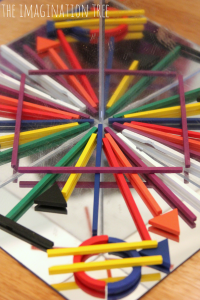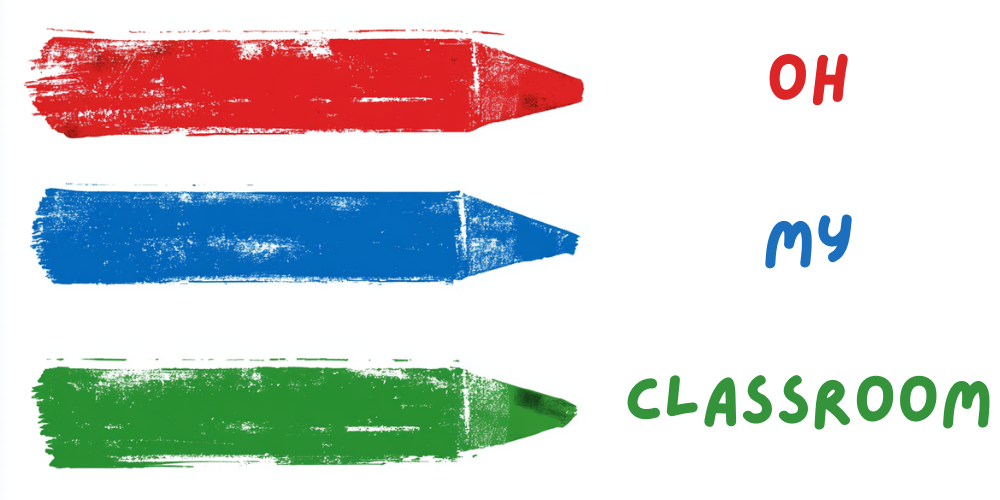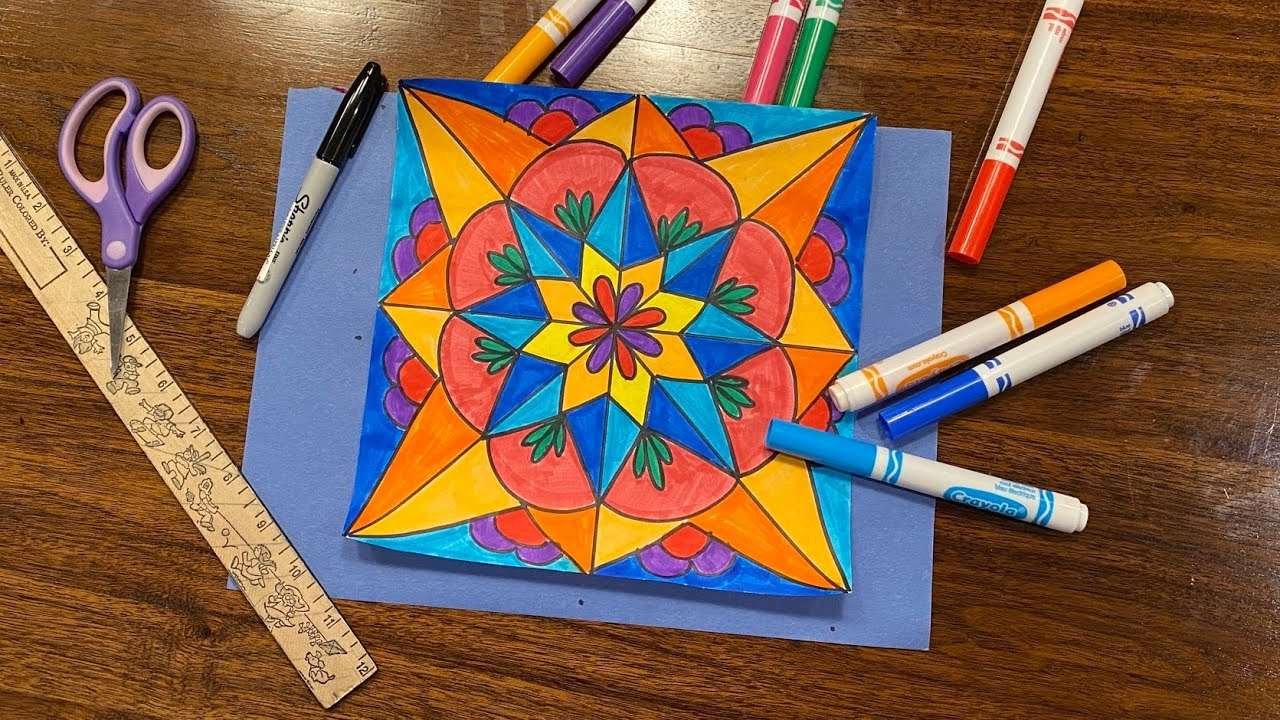Introducing symmetry to preschoolers can be a fun and engaging way to foster their cognitive development and enhance their understanding of shapes and patterns.
Symmetry, which refers to a balanced arrangement of parts on either side of a central line, can be found in various objects and designs around us.
Now, we will present engaging symmetry activities for preschool kids, providing them with an opportunity to explore symmetry in a playful and interactive manner.
These activities will not only stimulate their curiosity but also lay the foundation for more advanced mathematical concepts in the future.
So let’s dive in and discover the world of symmetry with these delightful activities for preschoolers!
Mirror Drawing:

Set up a mirror vertically on a table and provide each preschooler with a sheet of paper and crayons. Encourage them to draw a simple shape or pattern on one side of the paper while looking at their reflection in the mirror. As they draw, they will notice that the mirror image reflects the same shape on the other side of the paper. This activity allows children to explore symmetry by creating identical images on both sides of a central line. It helps them understand how a mirror reflects objects and introduces the concept of bilateral symmetry.
Symmetry Walk:

Take preschoolers on a symmetry-themed nature walk in a nearby park or garden. Instruct them to look for symmetrical objects or patterns such as leaves, flowers, or even buildings. As they discover symmetrical objects, encourage them to point out the line of symmetry and describe the similarities on both sides. This activity not only promotes observation skills but also helps children recognize symmetry in the real world, reinforcing the concept in a tangible way.
Related: 20 Exciting Stem Bins Ideas for Kids
Symmetry Collage:

Provide preschoolers with a variety of colored papers, scissors, glue sticks, and magazines with pictures of objects or shapes. Ask them to cut out different shapes from the materials provided and create a symmetrical collage. Encourage them to fold the shapes in half and glue them onto a larger sheet of paper, making sure both sides of the fold match perfectly. This hands-on activity allows children to explore symmetry through tactile and visual experiences, as they manipulate and arrange shapes to create balanced compositions.
Related: 20 Exciting Counting Stick Activities for Kids
Symmetry Printing:
Prepare a set of symmetrical objects or shapes, such as a leaf, a butterfly, or a heart, and dip them into the paint. Provide preschoolers with large sheets of paper and instruct them to press the object onto one side of the paper. Then, fold the paper in half and press it down to transfer the paint onto the other side, creating a symmetrical print. This activity combines art and symmetry, allowing children to experiment with shapes, patterns, and colors while reinforcing the concept of symmetry through hands-on exploration.
Source: simplyfullofdelight.com
Playdough Symmetry:
Give each preschooler a ball of playdough and ask them to create a symmetrical design. Encourage them to divide the playdough in half and shape each side to match the other, emphasizing the concept of balance. They can use various tools such as popsicle sticks, cookie cutters, or their hands to create symmetrical shapes and patterns. This activity enhances fine motor skills, spatial awareness, and creativity while engaging children in the exploration of symmetry through a tactile medium.
Source: thepreschooltoolboxblog.com
Symmetrical Snack:
Prepare a variety of snacks such as crackers, fruits, or sandwiches that can be easily divided into symmetrical halves. Show the preschoolers how to create symmetrical designs or patterns on their snack plates by arranging the food items in a balanced manner. Encourage them to explore different arrangements and discuss the symmetrical properties of their creations while enjoying their tasty symmetrical snacks.
Source: ar.pinterest.com
Symmetry Dance:
Play some lively music and guide the preschoolers in a symmetrical dance activity. Instruct them to mirror your movements as you demonstrate various dance steps. Encourage them to pay attention to their own movements and ensure they match the actions on the opposite side of their body. This activity promotes body awareness, coordination, and understanding of symmetry through physical movement and imitation.
Source: teachingexpertise.com
Shape Sorting:
Prepare a collection of symmetrical and non-symmetrical shapes in different sizes and colors. Provide preschoolers with sorting trays or containers and ask them to categorize the shapes based on their symmetry. Guide them in identifying and discussing the line of symmetry for each shape. This activity helps children develop shape recognition skills while reinforcing their understanding of symmetry and non-symmetry.
Source: notimeforflashcards.com
Symmetry Puzzles:
Create or print out puzzles that feature symmetrical images or patterns. Cut the puzzles along the line of symmetry to create two pieces that fit together. Invite the preschoolers to solve the puzzles by matching the symmetrical halves. This activity enhances problem-solving skills, spatial reasoning, and visual discrimination while engaging children in a fun and challenging symmetry-related task.
Source: teachbesideme.com
Symmetry Scavenger Hunt:
Prepare a list of symmetrical objects or shapes found in the preschool environment. Divide the children into small groups and provide them with the list and a basket. Encourage them to search for and collect items that exhibit symmetry, such as books, blocks, or toys. Once they find an item, ask them to identify and discuss its line of symmetry. This activity promotes teamwork, and observation skills, and reinforces the concept of symmetry in everyday objects.
Source: prek-math-te.stanford.edu
Symmetry Sensory Bin:
Create a sensory bin filled with materials such as colored rice, beads, buttons, or pom-poms. Hide symmetrical objects or shapes within the sensory bin. Provide preschoolers with scoops, tweezers, or their hands to search for and sort the symmetrical items. As they find the objects, encourage them to discuss the line of symmetry and match the pairs. This activity combines sensory play with symmetry exploration, stimulating tactile senses while reinforcing the concept.
Source: preschooligans.com
Symmetry Storytime:
Choose children’s books that feature symmetry as a theme or include symmetrical illustrations. Read the stories aloud to the preschoolers and encourage them to identify and discuss the symmetrical elements they observe. Afterward, provide drawing materials and invite the children to create their own symmetrical illustrations inspired by the story. This activity promotes language development, and storytelling skills, and encourages creativity through art.
Source: empoweredparents.co
Symmetrical Block Building:
Provide preschoolers with a set of building blocks, such as wooden blocks or Lego pieces. Instruct them to create symmetrical structures by building identical designs on both sides of a central line. Encourage them to experiment with different shapes, sizes, and colors, fostering their spatial awareness and problem-solving abilities. This activity combines construction play with symmetry exploration, allowing children to apply the concept in a three-dimensional context.
Source: funlearningforkids.com
Symmetrical Nature Rubbings:
Take preschoolers on a nature walk and ask them to collect leaves, tree bark, or other textured objects with symmetrical patterns. Back in the classroom, provide them with crayons and paper. Place the collected objects under the paper and show the children how to create rubbings by rubbing the crayon over the paper. The symmetrical patterns of the objects will be transferred onto the paper, allowing children to observe and appreciate the natural symmetry found in the world around them.
Source: learn.ncartmuseum.org
Symmetry Memory Game:
Create a set of memory cards with symmetrical images or patterns. Place the cards face-down on a table or the floor and invite preschoolers to take turns flipping two cards at a time. The goal is to find pairs of cards that exhibit symmetry. As they turn the cards over, encourage them to describe and compare the symmetrical elements they discover. This game promotes memory skills, and concentration, and reinforces the concept of symmetry through playful and challenging activity.
Source: preciousplay.wordpress.com
Symmetry I-Spy:
Create a set of cards with symmetrical objects or shapes depicted on them. Distribute the cards among the preschoolers and designate one child as the “I-Spy” leader. The leader describes a symmetrical object or shape they see in the room without revealing it, and the other children try to find the corresponding card. This activity encourages observation skills, and critical thinking, and reinforces the concept of symmetry through a playful guessing game.
Source: teachbesideme.com
Symmetry Texture Collage:
Provide preschoolers with a variety of materials with different textures, such as fabric scraps, sandpaper, bubble wrap, or feathers. Instruct them to create a symmetrical collage by arranging the materials on a large sheet of paper. Encourage them to explore the tactile sensations of the different textures and discuss the symmetrical arrangements they create. This activity combines sensory exploration with artistic expression and reinforces the concept of symmetry in a multisensory way.
Source: artfulparent.com
Symmetry Mime:
Engage preschoolers in a symmetrical mime activity. Divide the children into pairs and instruct one child from each pair to strike a symmetrical pose or make a symmetrical shape with their bodies. The other child then mirrors the pose or shape, creating a symmetrical representation. Encourage the children to take turns being the leader and the mirror. This activity promotes body awareness, cooperation, and understanding of symmetry through movement and imitation.
Source: earlyimpactlearning.com
Symmetry Bubble Art:
Fill a tray or shallow container with bubble solution. Add a few drops of liquid watercolor or food coloring to create colorful bubbles. Provide preschoolers with straws and instruct them to blow bubbles onto a sheet of paper. As the bubbles burst, they create unique symmetrical patterns. Encourage the children to observe and discuss the symmetrical shapes formed by the bubbles. This activity combines art, science, and sensory play while exploring symmetry in a dynamic and visually captivating way.
Source: housingaforest.com
Symmetrical Dress-Up:
Set up a dress-up station with clothing and accessories that can be divided into symmetrical halves, such as hats, gloves, or matching socks. Invite preschoolers to choose items and dress themselves in a symmetrical manner. Encourage them to look in a mirror and observe the balanced arrangement of the clothing and accessories. This activity promotes self-expression, and body awareness, and reinforces the concept of symmetry through imaginative play.
Source: organizedmom.net

